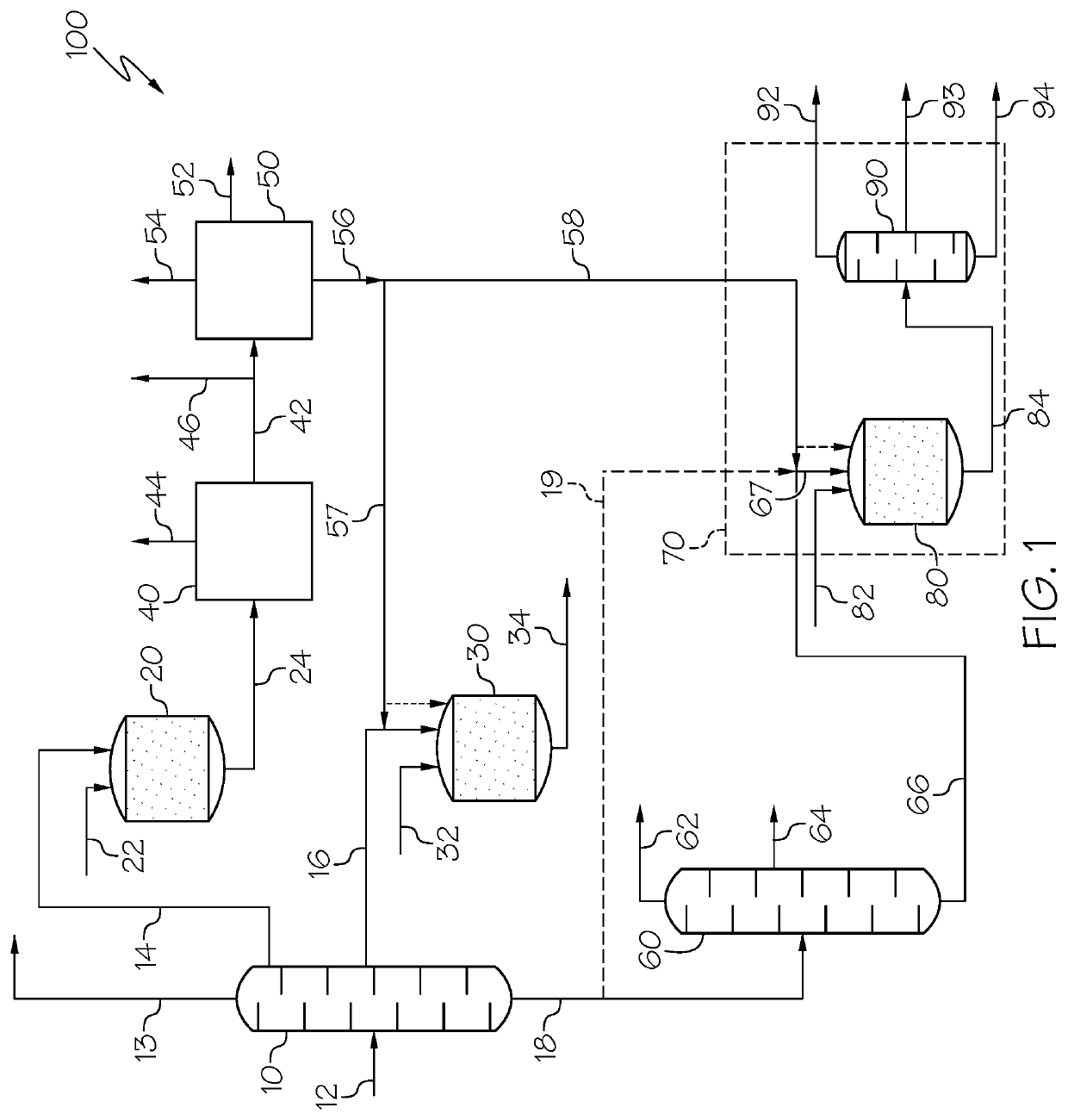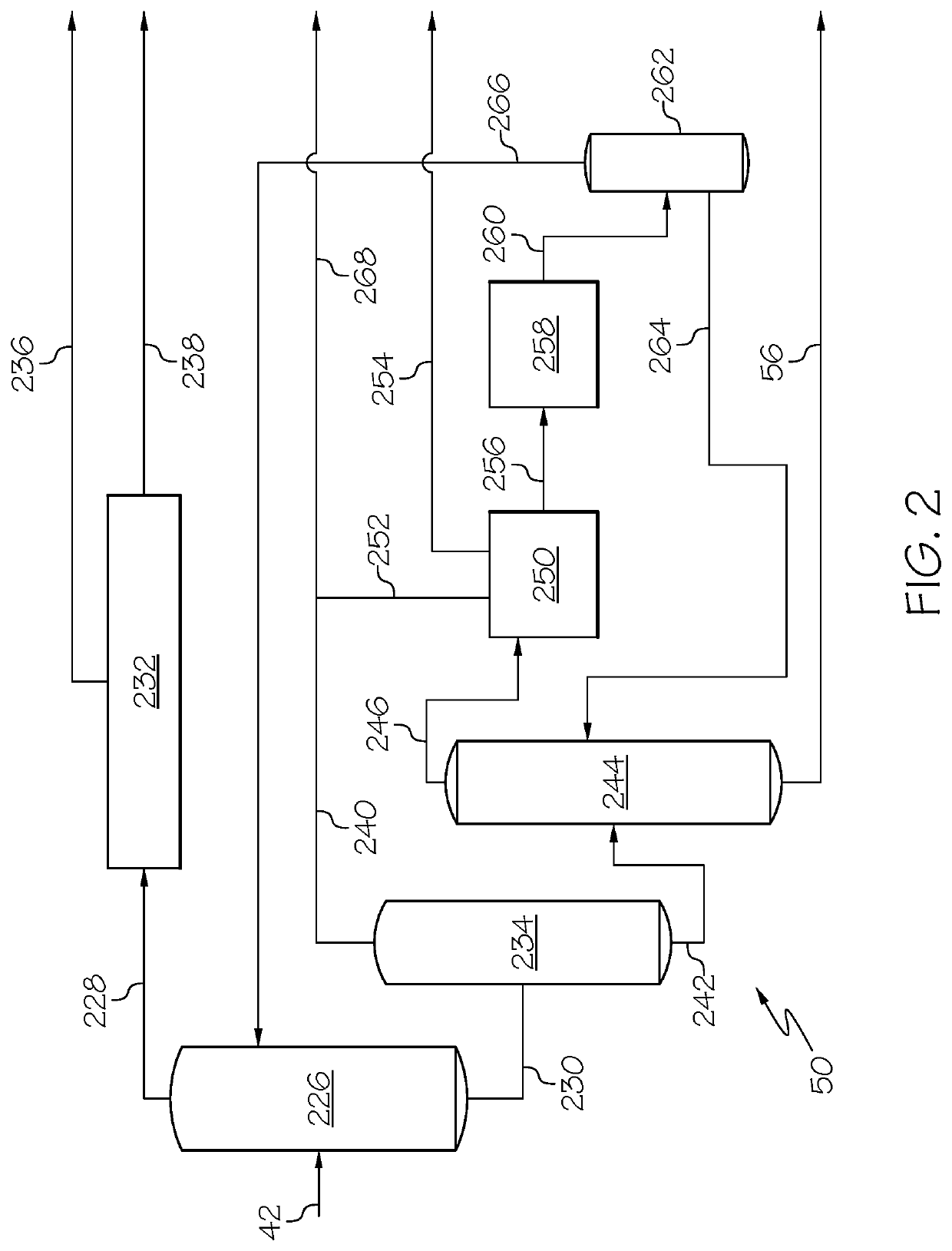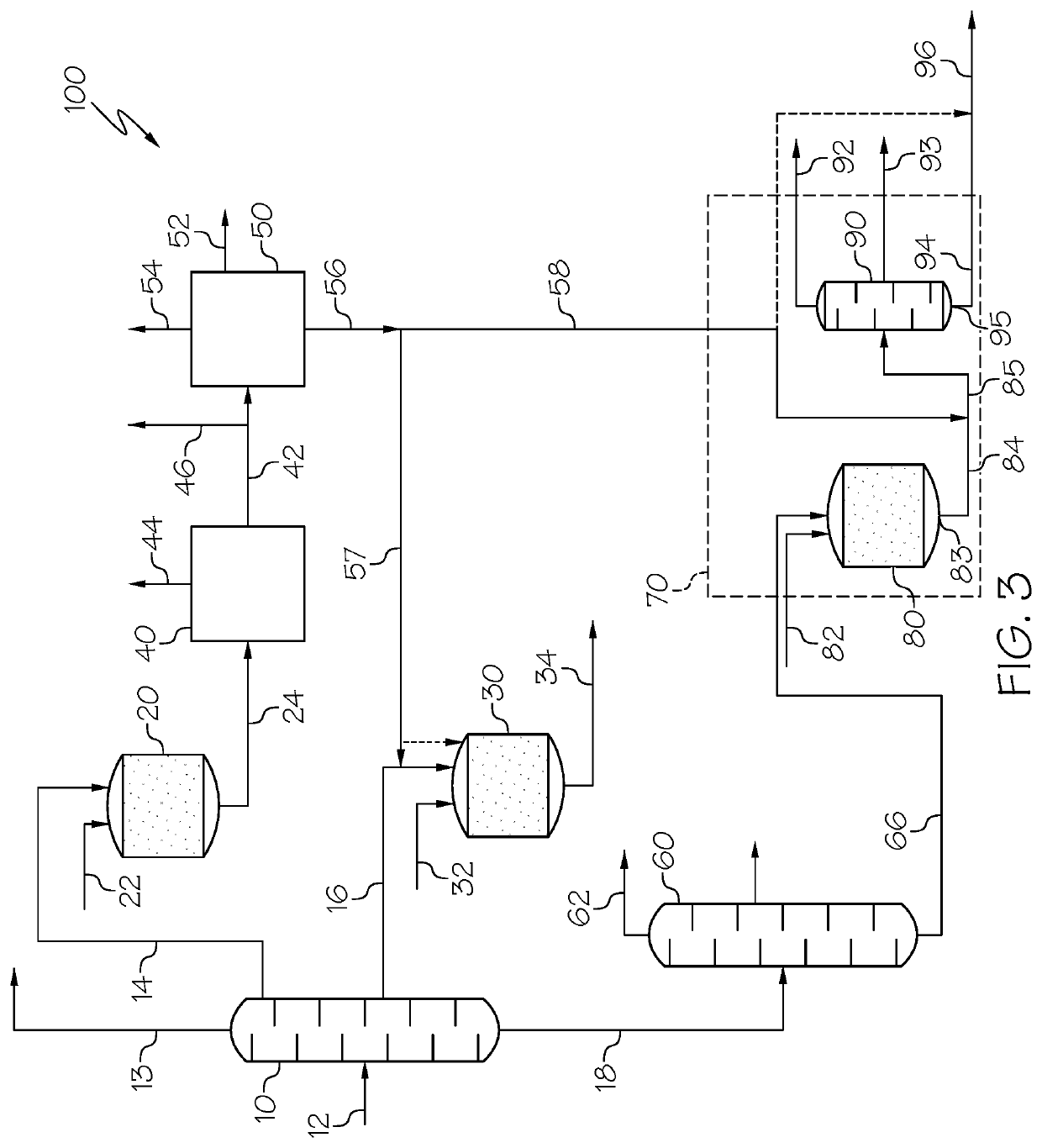Systems and processes integrating hydroprocessing and an aromatics recovery complex for separating and upgrading hydrocarbons
a hydroprocessing and aromatics recovery technology, applied in the separation process, hydrocarbon oil treatment products, vacuum distillation separation and other directions, can solve the problems of arc producing a reject stream or aromatic bottom that is very heavy, rapid deactivation of the catalyst, and the plugging of the reactor, so as to increase the solvency of heavy oils, reduce sedimentation in the hydroprocessing unit, and increase the production of valuable products and intermediates
- Summary
- Abstract
- Description
- Claims
- Application Information
AI Technical Summary
Benefits of technology
Problems solved by technology
Method used
Image
Examples
example 1
essing Vacuum Residue and Combining Aromatic Bottoms with the Hydroprocessed Effluent
[0144]In Example 1, a vacuum residue derived from heavy crude oil was subjected to hydroprocessing in an ebullated bed hydroprocessing unit comprising two ebullated bed reactors in series. The hydroprocessed effluent was then combined with an aromatic bottoms stream obtained from an aromatics recovery unit. The compositions and properties of the vacuum residue and the aromatic bottoms stream are provided in Table 3.
[0145]
TABLE 3Compositions and Properties of the Vacuum Residue and Aromatic Bottoms Stream for Example 1.Aromatic Vacuum BottomsProperty / CompositionUnitsResidueStreamAPI Gravity—1.6—Specific Gravity—1.0630.9226Sulfurweight percent6.130Nitrogenppmw37810MCR*weight percent29.50C7 asphaltenesweight percent20.740C5 asphaltenesweight percent32.180Nickelppmw46.70Vanadiumppmw137.00Carbonweight percent83.61—Hydrogenweight percent10.15—IBP° C.538198BP 5 wt. %° C.562207BP 10 wt. %° C.579211BP 20 wt....
example 3
n of Sedimentation
[0152]For Example 3, the combined mixture of the hydroprocessed effluent and aromatic bottoms of Example 1 and the hydroprocessed effluent of Comparative Example 2 were fractionated and the fractionation bottoms (fuel oil effluent) obtained from each was evaluated for sedimentation according to the standard test method in ASTM D4870. When 2 wt. % aromatic bottoms was added to the hydroprocessed effluent as in Example 1, the sedimentation observed in the fractionator bottoms was reduced by 10% compared to the sedimentation observed for the fractionator bottoms obtained from the hydroprocessed effluent Comparative Example 2 (without the aromatic bottoms added). Thus, Example 3 shows that adding the aromatic bottoms to the hydroprocessed effluent can reduce sedimentation in the downstream fractionator bottoms.
[0153]The portion of the aromatic bottoms stream added to the hydroprocessed effluent was increased to 30 wt. %. When the amount of aromatic bottoms added to the...
PUM
| Property | Measurement | Unit |
|---|---|---|
| boiling point temperatures | aaaaa | aaaaa |
| temperatures | aaaaa | aaaaa |
| density | aaaaa | aaaaa |
Abstract
Description
Claims
Application Information
 Login to View More
Login to View More - R&D
- Intellectual Property
- Life Sciences
- Materials
- Tech Scout
- Unparalleled Data Quality
- Higher Quality Content
- 60% Fewer Hallucinations
Browse by: Latest US Patents, China's latest patents, Technical Efficacy Thesaurus, Application Domain, Technology Topic, Popular Technical Reports.
© 2025 PatSnap. All rights reserved.Legal|Privacy policy|Modern Slavery Act Transparency Statement|Sitemap|About US| Contact US: help@patsnap.com



